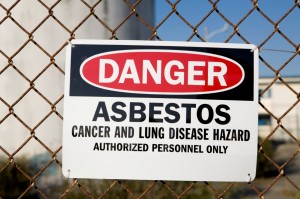 The facts on asbestos don’t make pretty reading. When it comes to deaths related to the UK workplace, asbestos is at the very top of the list. For those who don’t know much about this hidden killer and want to find out more about the possible effects of exposure to this naturally-occurring fibrous material, this article will attempt to shed some light on the subject.
The facts on asbestos don’t make pretty reading. When it comes to deaths related to the UK workplace, asbestos is at the very top of the list. For those who don’t know much about this hidden killer and want to find out more about the possible effects of exposure to this naturally-occurring fibrous material, this article will attempt to shed some light on the subject.
The seriousness of the situation
Unless you have happened to come across it through the nature of your work, you might not understand what all the fuss is about concerning asbestos. However, according to the Health and Safety Executive (HSE), asbestos is responsible for more than 4,500 deaths per year.
The inhalation of asbestos fibres can lead to a number of serious diseases. The main four are: mesothelioma (always fatal), lung cancer (a high fatality rate), asbestosis (a debilitating condition) and diffuse pleural thickening (does not pose a threat to a person’s life but can cause breathlessness).
While many people in this country are already exposed to low levels of asbestos, those who inhale higher concentrations of the fibres are at far greater risk of developing one of the diseases mentioned above. Once diagnosed, it is usually too late to do anything.
These diseases affect people later on in their lives so it is necessary to protect yourself now to prevent this from happening in the future.
Where you can find this dangerous material
From the 1950s until 1999 (when a ban was enforced), asbestos had been widely used as a building material in commercial and domestic properties, mainly due to its excellent insulation, fire protection and anti-corrosion properties. Because asbestos is usually combined with other materials, this makes it harder to know whether it is present or not.
For those working in buildings constructed or refurbished prior to the year 2000, it is quite likely that at least part of the building will have been constructed using asbestos materials. Machinery and installation products such as ceiling tiles, pipe insulation, sprayed coatings and boilers could also contain this material.
Those most at risk
Young workers who are frequently exposed to asbestos fibres are more likely to develop an asbestos-related disease than older people. This is due to the length of time it can take for the body to start showing symptoms following inhalation – a period of between 15 and 60 years.
Smokers exposed to asbestos fibres also run a greater risk of contracting lung cancer than those who don’t.
Those whose job involves working directly with asbestos-containing materials (ACMs) are expected to take precautions before subjecting themselves to this environment. The duty to manage this situation falls with the occupiers and owners of commercial premises.
The Hidden Killer campaign
HSE’s award-winning ‘Hidden Killer’ campaign was launched back in 2008 to raise awareness about asbestos and the dangers it can pose to tradespeople. The campaign, which won international recognition at the European Excellence Awards, was devised to tackle the scenario where around 20 workers were dying each week from asbestos-related diseases.
The HSE has worked hard to prevent a new generation of joiners, electricians, plasterers and plumbers from having their lives ended in this way. By the end of the second phase of the campaign, Hidden Killer had drawn in plenty of publicity receiving coverage by print, online and broadcast media.
Programme director at the HSE, Steve Coldrick, said:
“Asbestos remains Britain’s biggest workplace killer, but with the perception that it is largely a risk of the past we needed a hard-hitting PR campaign that would capture the imagination of tradesmen, particularly young ones. Using Ian Wright, a former tradesman, ticked all the boxes for us and delivered great results.”
What to do if you happen to find asbestos
There are strict guidelines in place for those working with asbestos through the Control of Asbestos Regulations 2012. The regulations warn against disturbing asbestos, while there are procedures to follow for those who have been trained to work in buildings where asbestos is known to be present. Workers have a right to know if the building they are working in has been checked for asbestos as they are within their rights to be protected from it.
Only licensed contractors have permission to remove asbestos, so if you do happen to disturb any asbestos-containing materials, it is important to speak to the owner of the building or whoever has a duty of care. Similarly, if asbestos is found in a domestic property, it is advisable to get in touch with an environmental health officer at your local council.
The National Asbestos Helpline is manned by a team of solicitors who are there to assist asbestos disease sufferers and their families by offering free practical, emotional, financial and legal help and support.

A chartered (fellow) safety and risk management practitioner with 20+ years of experience. David provides a healthy dose of how-to articles, advice and guidance to make compliance easier for construction professionals, Architects and the built environment. Get social with David on Twitter and Linkedin.




3 Comments
[…] Asbestos The Hidden Killer and the National Asbestos Helpline […]
[…] Asbestos The Hidden Killer and the National Asbestos Helpline […]
Thanks for writing this David, I’ve lost count of how many tradesmen just don’t understand the risks of asbestos when working on site. I’ve seen the affects of asbestos first hand and people label me a ‘moaner’ when I point it out to them. I will send them your way in future mate! Thanks,
Graham